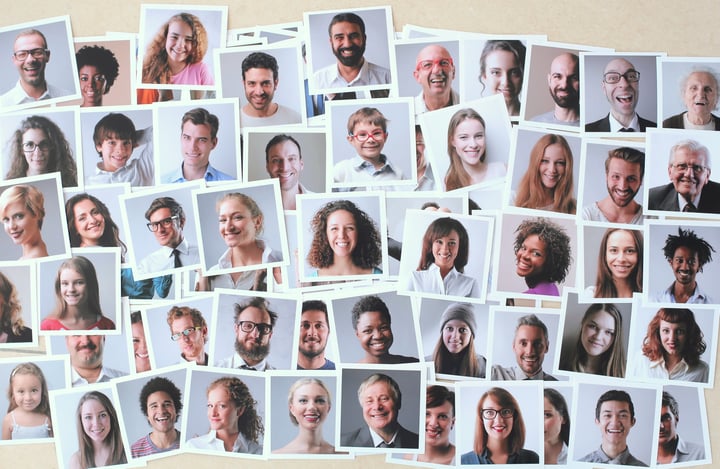Addressing Bias (Pt 2) : 5 Ways to Take Meaningful DEI Action
Last week, we explored what unconscious bias is, why it matters, and how it impacts our workplace. We learned that unconscious bias affects us all, sometimes despite our best intentions.
Given how often we fall prey to these biases, it may be impossible to eradicate them altogether. However, growing research shows that we can interrupt our biases by putting in place effective practices that can reduce and mitigate the harmful effects of unconscious biases on our colleagues and organizations.
In this blog post, we will investigate what these practices are by sharing 5 ways of moving beyond bias to take meaningful DEI (Diversity, Equity, Inclusion) action.
Strategy #1: Continue learning about our biases
It can be eye opening to discover our biases. Depending on how we became self-aware of them, the learning curve can be an emotional experience, filled with vulnerability, confusion, and perhaps even defensiveness. The first step toward growing our awareness is then to accept that these biases are normal: they are a part of who we are as human beings.
At the same time, because these biases form naturally and largely unconsciously, we must continuously develop our knowledge and seek opportunities to do so.
This can include researching different biases or participating in studies like the Harvard Implicit Association Test. We can also actively seek feedback about our tendencies, behaviours, and decisions from our colleagues and friends.
#2: Intentionally build inclusive spaces
Our unconscious biases often deter us from seeing the world from perspectives that are different from ours. They also limit our understanding of others’ experiences of the team environment, organizational culture, and/or access to resources.
Therefore, it takes intentional effort to create and maintain inclusive spaces, whether this means tearing down physical or emotional barriers, inviting diverse perspectives to our tables, or asking questions to better understand others’ experiences.
If you are involved in hiring decisions, notice that the process of recruitment can easily act as a barrier for inclusion, if biases are left unchecked. Take action by insisting on a diverse pool of candidates. Research shows that women are 79 times more likely to be hired if at least two women are in the finalist pool, while the odds of hiring a nonwhite candidate are 194 times higher with at least two finalist minority applicants.
#3. Establish objective criteria and demand accountability
We often talk about “culture fit.” This “fit” can determine a candidate’s likelihood of getting hired, joining a team, or even receiving a promotion. But what does this “fit” really mean? How do we measure this “fit”?
It is important to establish and clarify objective criteria during recruitment, because it ensures that all candidates are considered fairly for open positions.
If a team is involved in the hiring process, take some intentional time to critically reflect on the skills and specific qualifications required for the job. Ensure that everyone on the team reaches a consensus. Once a consensus is made, outline a standard list of interview questions or ways to measure the candidate’s ability to satisfy the agreed-upon criteria.
Additionally, hold yourself and your team of hiring personnel accountable. The objective conditions for hiring an ideal candidate should be waived as rarely as possible and must require a reasonable explanation for those exceptions. As Joan Williams, the author of Bias Interrupted (2021), insists, it is also crucial to keep track of long-term waiving trends, because research shows that objective rules tend to be applied more rigorously to groups that do not share the same backgrounds and interests as ours.
#4: Expand our trusted circles
We naturally gravitate toward people that are similar to us. While this may be normal and comfortable, if left unchecked, this behaviour can lead us into perpetual echo chambers (where we only hear ideas that are similar to ours) and expose us to risks of confirmation bias (our inclination to favour information that confirms what we already know).
Expanding our trusted circles can begin with a simple exercise of reflecting on the diversity of your 5 most trusted colleagues, in relation to your own dimensions of diversity. How many features (say, of race, ethnicity, gender, religion, class, etc.) do you share with your trusted colleagues? What dimensions are missing from your trusted circle?
Identifying the perspectives that are missing in our day-to-day exposure can mitigate the risk of confirmation bias and increase the creativity of our ideas and decisions.
Last but not least: #5. Resist stereotypes and build solidarity
Many of our unconscious biases shape (and are shaped by) stereotypes. And these stereotypes of race, ethnicity, gender, ability, and so on, harm real people around us.
As the authors of Unconscious Bias in Schools (2020) point out, while the unconscious association of the word “peanut butter” with “jelly” may not hurt anyone, unconsciously associating a Black person with “criminal” does. Women being perceived as less competent than men, “weak,” “emotional,” or as caregivers frequently explain why they are undervalued, given less credit for their work, or dismissed at promotion opportunities.
To take effective DEI action, we must first open our eyes and ears to notice how we are describing our colleagues or behaving around them. Then, if any problematic language/behaviours emerge, we must challenge ourselves and speak up to enforce that these incidents are not tolerated, especially in our workplace environments.
Locating and mitigating our biases do not have to be lonely, individual work! By helping each other to identify our biases and holding ourselves accountable, we can build solidarity within our teams that can generate a ripple effect throughout the organization and lead to systemic solutions.
There you have it! We covered 5 pivotal ways to move beyond bias and to engage in DEI action. What strategy will you adopt as your Call to Action today?
To learn about more DEI action strategies, explore The Humphrey Group’s programs here.
Related Posts
Addressing Unconscious Bias (Pt 1): What is It and Why Does It Matter?
#BreaktheBias, the hashtag that spread virally across the web through the solidarity of organizations & their leaders, demonstrates the call to address bias.
Read More“What’s in a Name?” Part 1: Why Names Matter for Inclusion in the Workplace
Inclusion in the workplace
Read MoreCelebrate Asian Heritage Month: How to Be a Better Ally to Our Asian Colleagues
This week, we begin celebrating Asian Heritage Month (AHM) in Canada. AHM is a great returning opportunity to learn more about the unique heritage, history, and impact of people of Asian descent.
Read More

